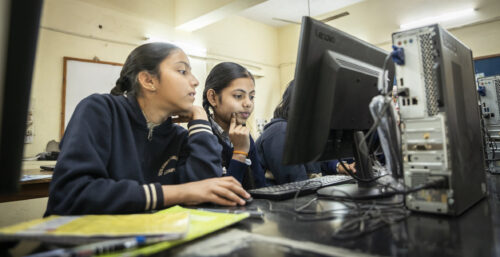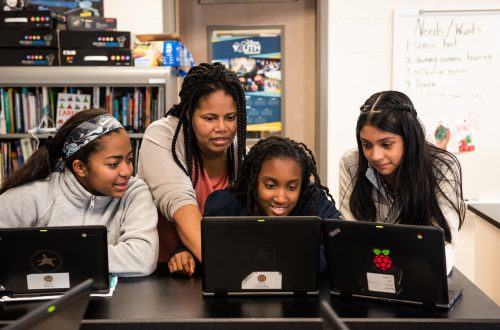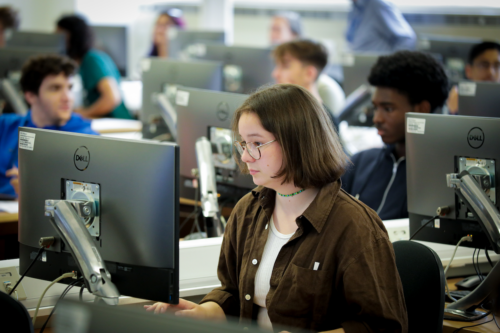Post Syndicated from Ben Durbin original https://www.raspberrypi.org/blog/how-were-creating-more-impact-with-ada-computer-science/
We offer Ada Computer Science as a platform to support educators and learners alike. But we don’t take its usefulness for granted: as part of our commitment to impact, we regularly gather user feedback and evaluate all of our products, and Ada is no exception. In this blog, we share some of the feedback we’ve gathered from surveys and interviews with the people using Ada.

What’s new on Ada?
Ada Computer Science is our online learning platform designed for teachers, students, and anyone interested in learning about computer science. If you’re teaching or studying a computer science qualification at school, you can use Ada Computer Science for classwork, homework, and revision.
Launched last year as a partnership between us and the University of Cambridge, Ada’s comprehensive resources cover topics like algorithms, data structures, computational thinking, and cybersecurity. It also includes 1,000 self-marking questions, which both teachers and students can use to assess their knowledge and understanding.
Throughout 2023, we continued to develop the support Ada offers. For example, we:
- Added over 100 new questions
- Expanded code specimens to cover Java and Visual Basic as well as Python and C#
- Added an integrated way of learning about databases through writing and executing SQL
- Incorporated a beta version of an embedded Python editor with the ability to run code and compare the output with correct solutions
A few weeks ago we launched two all-new topics about artificial intelligence (AI) and machine learning.
So far, all the content on Ada Computer Science is mapped to GCSE and A level exam boards in England, and we’ve just released new resources for the Scottish Qualification Authority’s Computer Systems area of study to support students in Scotland with their National 5 and Higher qualifications.
Who is using Ada?
Ada is being used by a wide variety of users, from at least 127 countries all across the globe. Countries where Ada is most popular include the UK, US, Canada, Australia, Brazil, India, China, Nigeria, Ghana, Kenya, China, Myanmar, and Indonesia.

Just over half of students using Ada are completing work set by their teacher. However, there are also substantial numbers of young people benefitting from using Ada for their own independent learning. So far, over half a million question attempts have been made on the platform.
How are people using Ada?
Students use Ada for a wide variety of purposes. The most common response in our survey was for revision, but students also use it to complete work set by teachers, to learn new concepts, and to check their understanding of computer science concepts.
Teachers also use Ada for a combination of their own learning, in the classroom with their students, and for setting work outside of lessons. They told us that they value Ada as a source of pre-made questions.
“I like having a bank of questions as a teacher. It’s tiring to create more. I like that I can use the finder and create questions very quickly.” — Computer science teacher, A level
“I like the structure of how it [Ada] is put together. [Resources] are really easy to find and being able to sort by exam board makes it really useful because… at A level there is a huge difference between exam boards.” — GCSE and A level teacher
What feedback are people giving about Ada?
Students and teachers alike were very positive about the quality and usefulness of Ada Computer Science. Overall, 89% of students responding to our survey agreed that Ada is useful for helping them to learn about computer science, and 93% of teachers agreed that it is high quality.
“The impact for me was just having a resource that I felt I always could trust.” — Head of Computer Science
Most teachers also reported that using Ada reduces their workload, saving an average of 3 hours per week.
“[Quizzes] are the most useful because it’s the biggest time saving…especially having them nicely self-marked as well.” — GCSE and A level computer science teacher
Even more encouragingly, Ada users report a positive impact on their knowledge, skills, and attitudes to computer science. Teachers report that, as a result of using Ada, their computer science subject knowledge and their confidence in teaching has increased, and report similar benefits for their students.
“They can easily…recap and see how they’ve been getting on with the different topic areas.” — GCSE and A level computer science teacher
“I see they’re answering the questions and learning things without really realising it, which is quite nice.” — GCSE and A level computer science teacher
How do we use people’s feedback to improve the platform?
Our content team is made up of experienced computer science teachers, and we’re always updating the site in response to feedback from the teachers and students who use our resources. We receive feedback through support tickets, and we have a monthly meeting where we comb through every wrong answer that students entered to help us identify new misconceptions. We then use all of this to improve the content, and the feedback we give students on the platform.

We’d love to hear from you
We’ll be conducting another round of surveys later this year, so when you see the link, please fill in the form. In the meantime, if you have any feedback or suggestions for improvements, please get in touch.
And if you’ve not signed up to Ada yet as a teacher or student, you can take a look right now over at adacomputerscience.org
The post How we’re creating more impact with Ada Computer Science appeared first on Raspberry Pi Foundation.



